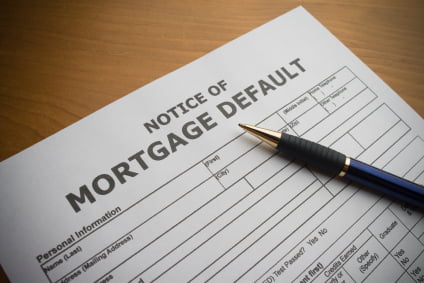Question: Do foreclosure alternatives, such as a shortsale or deed-in-lieu, affect my Fair Isaac Corporation (FICO) score any differently than a foreclosure?
Answer: No. Taken as a single event, foreclosure, shortsale and deeds-in-lieu all affect FICO scores equally. FICO considers each action as “not paid as agreed accounts.”
For FICO’s words on the matter, see their topic: Are the alternatives to foreclosure any better as far as my FICO score is concerned?
The difference in credit score impact observed by real estate professionals and their clients is mainly determined by the history and frequency of delinquencies leading up to the foreclosure, shortsale or deed-in-lieu.
One 30-day delinquency can subtract 60 – 110 points, and the longer a seller is delinquent the worse damage to their credit score. These credit blunders can add up very quickly, so getting out sooner rather than later is usually a distressed homeowner’s best course to minimize damage to their FICO score.
A foreclosure or foreclosure alternative can drop a credit score by 150 points or more and will remain on a seller’s record for seven years. Still, foreclosure and its alternatives are not as damaging as filing for bankruptcy, which can drop a credit score by as much as 240 points and remain on file for seven to ten years.
Related article:
A commenter asked how foreclosure and short sales affect the ability to borrow in the future based on Fannie Mae, Freddie Mac and Federal Housing Administration (FHA) requirements. We appreciate the question, it is correct the FICO score is just one of the factors which affect a homeowner’s ability to borrow in the future.
Fannie Mae and Freddie Mac require seven years to pass after foreclosure before a buyer becomes eligible for financing. However, if the buyer can document that extenuating circumstances caused the foreclosure (a job loss, long-term illness, etc.), the seven-year waiting period may be reduced to three years.
Fannie Mae and Freddie Mac require two years to pass for a buyer completing a shortsale or deed-in-lieu to become eligible for financing, if the loan-to-value ratio (LTV) on the new home will be 80% or less. If the LTV will be greater than 80% and less than or equal to 90% the waiting period is four years. Any higher LTV results in a seven-year waiting period. [Fannie Mae June 26, 2012 Selling Guide B3-5; Freddie Mac Single-Family Seller/Servicer Guide 37.7]
A buyer who was current on their payments at the time they complete a shortsale is eligible for an Federal Housing Administration (FHA)-insured loan without any waiting period. A buyer who is in default must wait three years before he is eligible for FHA-insured financing, unless he can demonstrate extenuating circumstances. [HUD Handbook 4155.1 4.C.2.l]
FHA-insured loans may be granted three years after a buyer completes a foreclosure or a deed-in-lieu. The three-year waiting period may be waived for extenuating circumstances. [HUD Handbook 4155.1 4.C.2.f]
It is important to note that in some instances, lenders may overlay more stringent guidelines than the bare minimum set by Fannie, Freddie or the FHA.















Thanks so much for clarifying this so well. As I mentioned, I couldn’t get anyone to give me the same answer or any valid references. Cheers!
@ Jerolyn Dolan – the exact “legal reference” is the FNMA Selling Guide, 6-30-10 at 426.
Yes, this article leaves out that there is a huge difference in letting a house foreclose vs. short sale. Per FNMA guideline, a consumer may be eligible to purchase a home SEVEN YEARS from the date of the foreclosure sale. The only exception to this rule is if the borrower has “extenuating circumstances” that led to foreclosure and the circumstances are very specific.
DIL and Short Sales are the same. A buyer is eligible to purchase a property after TWO YEARS with 20% down; FOUR YEARS with 10% down; and SEVEN YEARS at the LTV ratios set forth in the FNMA matrix at that time.
Bankruptcy (1x filing): FOUR YEARS after the discharge at the LTV ratios set by FNMA.
ft is correct on the effect of FICO. One is no better than the other as far as FICO is concerned. But this is only half the story.
Fannie Mae and Freddie Mac require seven years to pass after foreclosure before a buyer becomes eligible for financing. However, if the buyer can document that extenuating circumstances caused the foreclosure (a job loss, long-term illness, etc.), the seven-year waiting period may be reduced to three years.
Fannie Mae and Freddie Mac require two years to pass for a buyer completing a shortsale or deed-in-lieu to become eligible for financing, if the loan-to-value ratio (LTV) on the new home will be 80% or less. If the LTV will be greater than 80% and less than or equal to 90% the waiting period is four years. Any higher LTV results in a seven-year waiting period. [Fannie Mae June 26, 2012 Selling Guide B3-5; Freddie Mac Single-Family Seller/Servicer Guide 37.7]
A buyer who was current on their payments at the time they complete a shortsale is eligible for an Federal Housing Administration (FHA)-insured loan without any waiting period. A buyer who is in default must wait three years before he is eligible for FHA-insured financing, unless he can demonstrate extenuating circumstances. [HUD Handbook 4155.1 4.C.2.l]
FHA-insured loans may be granted three years after a buyer completes a foreclosure or a deed-in-lieu. The three-year waiting period may be waived for extenuating circumstances. [HUD Handbook 4155.1 4.C.2.f]
It is important to note that in some instances, lenders may overlay more stringent guidelines than the bare minimum set by Fannie, Freddie or the FHA.
The part that this article and all others I’ve read to date, leave out, is the fact that there is a HUGE difference between what a short sale/DIL vs a foreclosure do have is when it comes to trying to get other financing.
If you’re trying to get a Freddie/Fannie loan and you have a foreclosure, you have to wait something like 7 years for it to come off, before you will qualify for ANY (gov’t backed) financing on other properties VS…if you “only” have a short sale or a DIL, it’s only 2-4 years. Of course this all depends on who you talk to – I can’t seem to get a consistent answer or any legal reference for the exact waiting periods, but I’ve been consistently told that there is a huge difference between two.